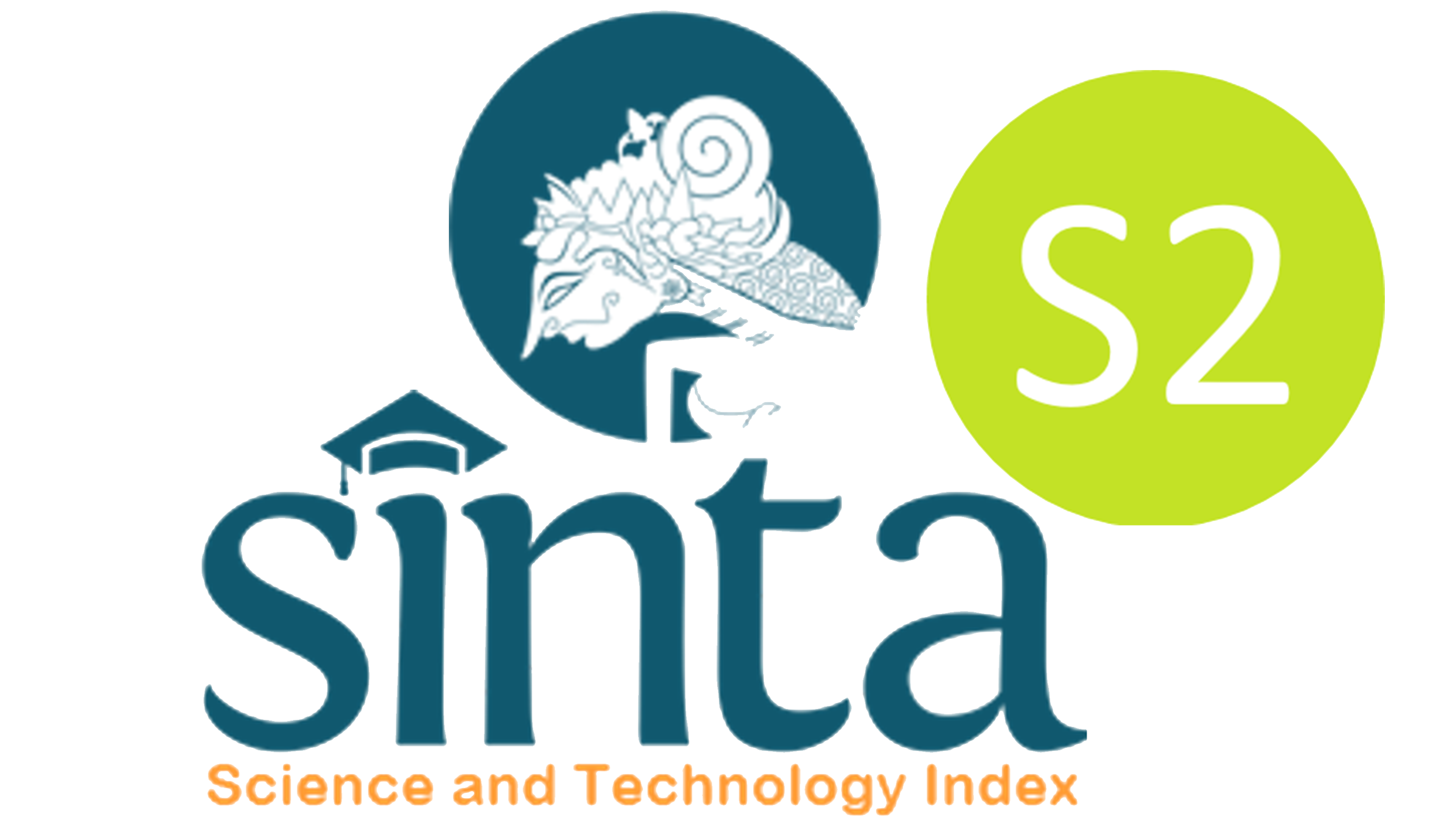The comparison of k-means and k-medoids algorithms for clustering the spread of the covid-19 outbreak in Indonesia
Wargijono Utomo(1*);
(1) Universitas Krisnadwipayana
(*) Corresponding Author
AbstractThe coronavirus spreads quickly through human-to-human transmission via close contact and respiratory droplets such as coughing or sneezing. Various studies have been carried out to deal with Covid-19. However, the cure for this virus has not been found until now. Based on data from the covid19.go.id page retrieved on January 1st, 2021, which was updated by the Ministry of Health, the overall number of confirmed cases was 1,078,314 active cases reaching 175,095 or 16.2% of confirmed cases, recovered 873,221 or 81.0% of confirmed cases, and death 29,998 or 2.8% of the confirmed cases. This study compares the two algorithms of data groups to analyze clustering patterns to determine the best data processing method. The data in this study sourced from the Ministry of Health, contained 4 attributes, including confirmed cases, treatment, recovery, and death cases. In this study, only 2 attributes were used: the confirmed and death cases. From the data analysis and processing results through a comparison between the K-Means method and the K-Medoids for clustering the spread of the coronavirus in Indonesia, a conclusion is derived. With the Davies Boulden index value from K2 to K9 values, it turns out that the K-Means method gets the smallest value at the K-5 of 0.064, while K-Medoids at the k-2 value of 0.411. Thus, from the two methods used, it can be concluded that the best method for clustering the spread of the coronavirus outbreaks in Indonesia is the K-Means method. KeywordsCOVID-19; Clusterization; K-Means; K-Medoids
|
Full Text:PDF |
Article MetricsAbstract view: 1267 timesPDF view: 550 times |
Digital Object Identifier https://doi.org/10.33096/ilkom.v13i1.763.31-35 https://doi.org/10.33096/ilkom.v13i1.763.31-35
|
Cite |
References
M. A. Shereen, S. Khan, A. Kazmi, N. Bashir, R. Siddique, COVID-19 infection: Origin, transmission, and characteristics of human coronaviruses, Journal of Advanced Research 24 (2020) 9198
N. Dwitri dkk, Penerapan Algoritma K-Means dalam Menentukan Tingkat Penyebaran Pandemi Covid-19 di Indonesia, Jurnal Teknologi Informasi, Vol. 4, No.1, Juni 2020
A. Hamed et al, Accurate Classi?cation of COVID-19 Based on Incomplete Heterogeneous Data using a KNN Variant Algorithm, Research Square 2020
M. Rubaiyat Hossain Mondal, Subrato Bharati, Prajoy Podder, Priya Podder, Data analytics for novel coronavirus disease, Informatics in Medicine Unlocked 20 (2020), 100374.
A. T. Sahlol et al, COVID?19 image classiication using deep features and fractional?order marine predators algorithm, Scientific Report, 10:15364 https://doi.org/10.1038/s41598-020-71294-2
R. A. Indraputra , R. Fitriana, K-Means Clustering Data COVID-19, Jurnal Teknik Industri, Volume 10 No.3. Desember 2020.
A. Solichin, K. Khairunnisa, Klasterisasi Persebaran Virus Corona (Covid-19) Di DKI Jakarta Menggunakan Metode K-Means, Fountain of Informatics Journal Volume 5, No. 2, November 2020
F. Farahdinna, I. Nurdiansyah, A. Suryani, A. Wibowo, perbandingan algoritma k-means dan k-medoids dalam klasterisasi produk asuransi perusahaan nasional, Jurnal Ilmiah FIFO, Volume 11 No. 2, November 2019.
I. Parlina, A. P. Windarto, A. Wanto, M. R. Lubis, memanfaatkan algoritma k-means dalam menentukan pegawai yang layak mengikuti asessment center untuk clustering program sdp, CESS (Journal of Computer Engineering System and Science), Volume 3, No.1, Januari 2018.
P. R. Nastiti, A. B. W. Putra, perbandingan algoritma k-means dan fuzzy c-means clustering untuk kualifikasi data kinerja dosen di jurusan teknologi informasi polnes, PROSIDING SNSebatik 2017, Vol 1 No. 1, Juni 2017.
N. Agustina, P. Prihandoko, 2020, Perbandingan Algoritma K-Means Dengan Algoritma Fuzzy C-Means Untuk Clustering Tingkat Kedisiplinan Kinerja Karyawan, Jurnal RESTI, Volume 2 No.3 (2018), 621-626.
I. Kamila, U. Khairunnisa, M. Mustakim, Perbandingan Algoritma K-Means dan K-Medoids untuk Pengelompokan Data Transaksi Bongkar Muat di Provinsi Riau, Jurnal Ilmiah Rekayasa dan Manajemen Sistem Informasi, Vol. 5, No. 1, Hal. 119-125, Februari 2019.
N. L. Anggraeni, Teknik Clustering Dengan Algoritma K-Medoids Untuk Menangani Strategi Promosi Di Politeknik TEDC Bandung, Jurnal Teknologi Informasi dan Pendidikan, vol. 12 no. 2 pp. 1-7, 2019.
Samudi, Slamet Widodo, Herlambang Brawijaya,2020, The K-Medoids Clustering Method for Learning Applications during the COVID-19 Pandemic, Jurnal dan Penelitian Teknik Informatika Volume 5, Number 1, Oktober 2020
Iqbal Dzulfiqar Iskandar, Melisa Winda Pertiwi, Mira Kusmira, Imam Amirulloh, komparasi algoritma clustering data media online pada proses bisnis, Jurnal IKRA-ITH Informatika Vol. 2 No. 3, November 2018.
R. D. Ramadhani and D. J. Ak, Evaluasi K-Means dan K-Medoids pada Dataset Kecil, Semin. Nas.
Inform. dan Apl., no. September, pp. 2024, 2017.
H. Zayuka, S. M. Nasution, and Y. Purwanto, Perancangan Dan Analisis Clustering Data Menggunakan Metode K-Medoids Untuk Berita Berbahasa Inggris Design and Analysis of Data Clustering Using Kmedoids Method For English News, e-Proceeding Eng., vol. 4, no. 2, pp. 21822190, 2017
A F Khairatia , A A Adlinaa , G F Hertonoa , B D Handaria, Kajian Indeks Validitas pada Algoritma K-Means Enhanced dan K-Means MMCA, Prosiding Seminar Nasional Matematika, PRISMA 2 (2019): 161-170.
R. D. Kusumah, B. Warsito, M. A. Mukid, perbandingan metode kmeans dan self organizing map (A case study: The clustering of districts/cities in Central Java based on human development index indicators 2015), JURNAL GAUSSIAN, Volume 6, Nomor 3, Tahun 2017, Halaman 429-437.
Refbacks
- There are currently no refbacks.
Copyright (c) 2021 Wargijono Utomo

This work is licensed under a Creative Commons Attribution-ShareAlike 4.0 International License.










